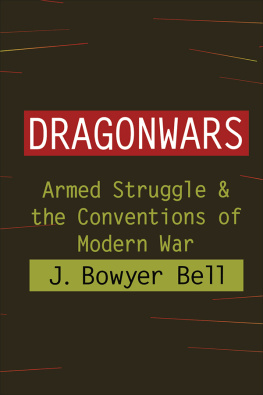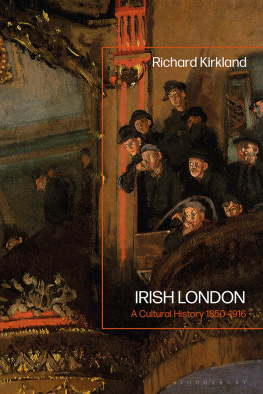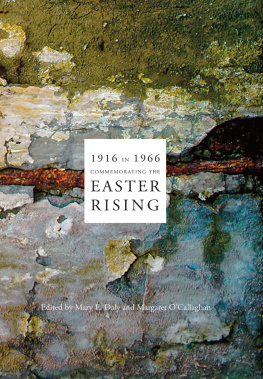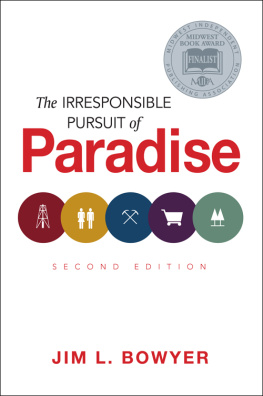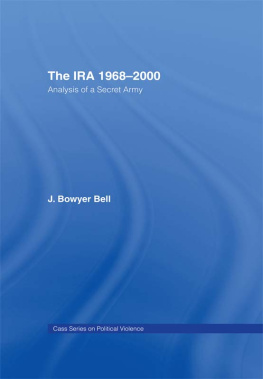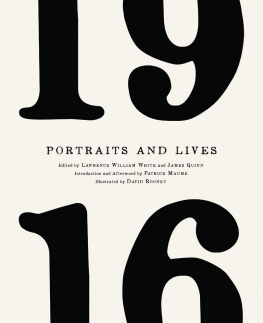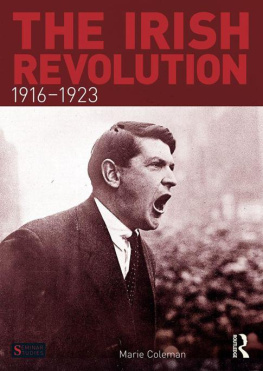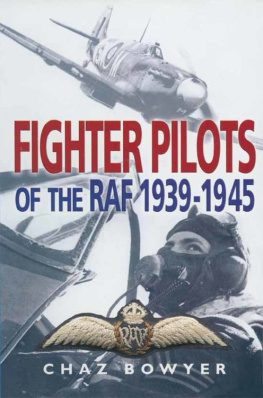First published 1987 by Transaction Publishers
Published 2017 by Routledge
2 Park Square, Milton Park, Abingdon, Oxon 0X14 4RN
711 Third Avenue, New York, NY 10017, USA
Routledge is an imprint of the Taylor & Francis Group, an informa business
Copyright 1987 by Taylor & Francis.
this book was written under the auspices of the Institue of War and Peace Studies, Columbia University.
All rights reserved. No part of this book may be reprinted or reproduced or utilised in any form or by any electronic, mechanical, or other means, now known or hereafter invented, including photocopying and recording, or in any information storage or retrieval system, without permission in writing from the publishers.
Notice:
Product or corporate names may be trademarks or registered trademarks, and are used only for identification and explanation without intent to infringe.
Library of Congress Catalog Number: 86-30745
Library of Congress Cataloging-in-Publication Data
Bell, J. Bowyer, 1931
The gun in politics.
Includes index.
1. IrelandPolitics and government20th century.
2. ViolenceIrelandHistory20th century.
3. Firearms IrelandHistory20th century.
4. Terrorism IrelandHistory20th century.
5. Insurgency IrelandHistory20th century.
6. Northern IrelandPolitics and government1969- I. Title.
DA59.B428 1987 941.6082 86-30745
ISBN 13: 978-1-56000-566-7 (pbk)
For my Kerry wife Nora Browne,
who has made gentle the violent
Irish political seas.
Mo ghra thu
The following publishers and journals are acknowledged for their permission to reprint the following previously published essays:
The Secret Army: The IRA 1916-1970, London: Blond, 1970, and New York: John Day, 1971 (variously republished most recently as The Secret Army, the IRA 1916-1969, Cambridge, Mass.: MIT Press, 1983, and Dublin: Academic Press, 1983 American Writer in St. Mullins, in The Nationalist and Leinster Times, Centenary Issue, 1883-1983 The Thompson Submachine Gun in Ireland, 1921, in The Irish Sword (Journal of the Military History Society of Ireland), vol. viii, no. 31 (Winter 1967)
Proliferation: Sophisticated Weaponry and Revolutionary options The Sub-State Perspective, in Arms Control and Technological Innovation, London: Croom Helm, 1977.
Arms Transfers, Conflict and Violence at the Sub-State Level, in Uri Raanan, Robert L. Pffaltzgraff, Jr., and Geoffrey Kemp, eds., Arms Transfers to the Third World, copyright 1979 by Westview Press, Boulder, Colorado
Social Patterns and Lessons, The Irish Case, in Civil War in the Twentieth Century, Lexington: University of Kentucky Press, 1972 Ireland and the Spanish Civil War, 1936-1939, in Studia Hibernica, Dublin, vol. ix (1969, annual)
The Shadow of the Gunman, in Sword of Light, The Irish American Review, vol. 1, no. 1 (Spring 1974)
The Escalation of Insurgency, The Experience of the Provisional I.R.A., 1969-1971, in The Review of Politics, vol. xxv, no. 3 (July 1973)
Strategy, Tactics, and Terror: An Irish Perspective, in International Terrorism, National, Regional and Global Perspectives, New York: Praeger, 1976
The Men with Guns, the Legitimacy of Violent Dissent, in Legitimation of Regimes, Beverly Hills: Sage, 1979 The Irish Republican Army, in Contemporary Terror, Studies in Sub- State Violence, London: Macmillan, 1981 On Revolt: Strategies of National Liberation, Cambridge, Mass.: Harvard University Press, 1976
Revolts Against the Crown: The British Response to Imperial Insurgency, in Parameters (Journal of the Army War College), vol. ix, no. 1 (1974)
A Time of Terror; How Democratic Societies Respond to Revolutionary Violence, New York: Basic Books, 1978 The Gun in Europe, in The New Republic, vol. 173, no. 21 (November 22, 1975)
Hostage Ireland, in The New Republic, vol. 174, no. 25 (June 19,1976) Terrorism International Inc.: Academic Branch, in Hibernia, Dublin (September 7, 1978)
Contemporary Irish Archival Resources, in Administration (Journal of the Institute of Public Administration of Ireland), vol. xviii, no. 2 (Summer 1970)
The Chroniclers of Violence in Northern Ireland: The First Wave Interpreted, in The Review of Politics, vol. xxxiv, no. 2 (April 1972), and Eire- Ireland, vol. vii, no. 1 (Spring 1972)
The Chroniclers of Violence in Northern Ireland Revisited: The Analysis of Tragedy, in The Review of Politics, vol. xxvi, no. 4 (October 1974) The Chroniclers of Violence in Northern Ireland: A Tragedy in Endless Acts, in The Review of Politics, vol. 38, no. 4 (October 1976)
The Troubles as Trash, Shadows of the Irish Gunman on an American Curtain, in Hibernia (January 20, 1978)
The Curragh: 1940-1945, in Irish Times (May 8, 1985)
This effort took considerably longer to reach print than anyone had anticipated. Originally it was simply the idea of republishing past work on Irish matters: a whip through past scripts, a bit of pasting, and a book thereafter. The rationale was and remained that much of my Irish work was often not really written for those concerned with Ireland but rather for those concerned with technology transfer or an appropriate democratic response to terrorism or the impact of civil war on society. Even those articles or chapters focusing particularly on Irish matters proved scattered, appearing in fugitive forums, usually far from the island. Using Ireland as example, of course, much had to be repeated for the innocent so that there was always considerable overlapEaster rerun and the Provos rewrite. Still, it seemed possible that judicious scissoring and prompt publication would be possible. Like many Celtic matters, however, the project hung fire, and time drifted bymore to be written, more to be clipped, titles changed, conclusions postponed. The original Irish publisher, the elusive Sean Browne, withdrew from the scene into secrecy and rumor, carrying along various drafts and some enthusiasm. And so there were more delays, more editorial defections, more events, and more scripts.
Ultimately, heaped pages to hand, matters were pursued with the encouragement of various potential editors, not the least was Irving Louis Horowitz of Transaction. What has emerged is not only a collection of past work, as originally planned, but also, since clipping proved more complex, a mingled manuscriptsome old, some new, much discarded, all edited, a medley rather than separate essays or a brand new book. The floor, despite the published length, is cluttered with cuttings and outs, repeats, but not articulate mistakesfaint predictions are included in the text, no error of judgment edited out, no flaw on the cutting room floor. And there are comments included, asides on the unfolding analysis, for the subjects would not stay within covers nor hew to predictable lines. There could thus be no coda, no neat end. And there are too few general conclusions, little wisdom to offer after a generation in and out of the island.
There are one or two small points. The present disturbances, now running deep into a second decade, I usually call the Ulster Troubles (the Northern Troubles would do as well) since there lies the core (the old province: six counties and the border zone), even though the crisis is Irish and has lapped far shores: bombs in London, smuggling out of America, contacts in the Middle East, tours of Europe. An effort has been made to make the text uniform, despite the original style, and concise; therefore, bits and pieces have been edited out or a few words changed for reasons of style, but, overall, previously published material is as previously published. There is no point in trying to thank all those who have been kind over the years. Most of those who appear in these pages would rather have been skipped over if they played a role or more fulsomely praised if their works were mentioned. In twenty years a very long list of debts is accumulated and not a few admonitions; secret armies tend to prefer to remain in many matters secret. At the end, however, special thanks that are long overdue go to my Kerry wifeat last a valid Irish connection for an alien traveler who has tolerated the IRA Army Council meeting in the kitchen, the police at the end of the lane, odd arrivals and strange gunmen for tea, and has provided a warm, Celtic, safe house for my ventures into violence. This book is for herperhaps next time the gift will not come lumbered with Irish troubles but wrapped with a three-color ribbon of a more peaceful theme: fewer gunmen, however genial in person, more saints and scholars, however rare in real life, even in Kerry.


